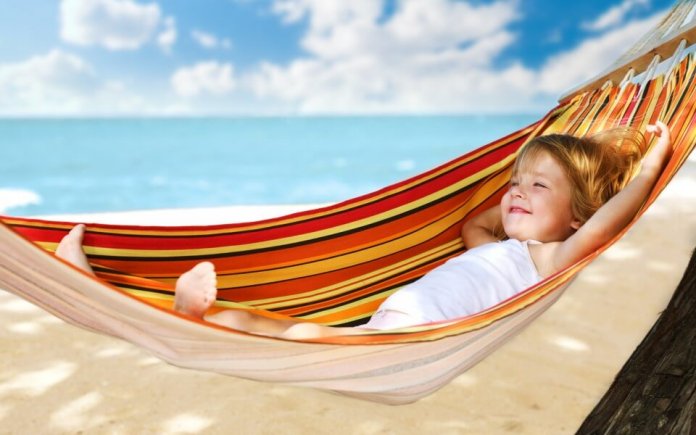Families with children have to prepare especially carefully for the summer vacation season. After all, the safety of the child on the beach is the most important task for parents. We hope that our top 7 tips for keeping kids safe on the beach will make family holidays easier and more enjoyable.
7. Don't let your child swim alone
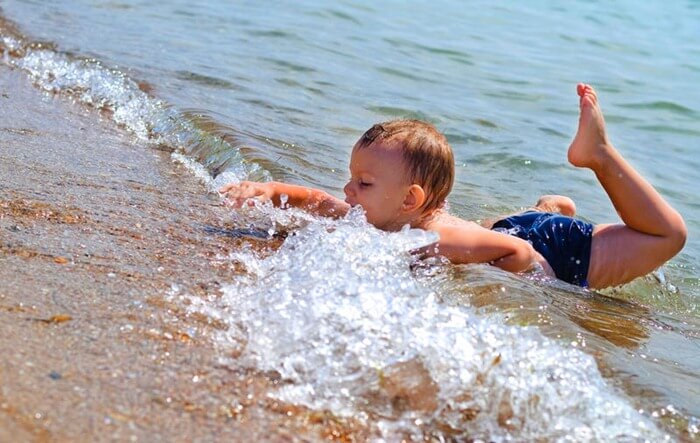 If your child is near water, you should also be near water. If the child is in the water, you should be ankle-deep right behind him at a minimum distance. Sudden cramping or tiredness can lead to distress. Also, a child can get into a rip current (such currents are called pulls or rips) near the shore, panic and drown. There are tractors even in shallow seas, such as the Sea of Azov. Such currents are directed to the coast at right angles and to get out of them you need to swim not forward, but parallel to the coast, until you get out of the rip. Then you need to turn and swim diagonally to the shore. Explain to your child that the rip will not be able to drag him to the bottom, this is not a funnel or a whirlpool.
If your child is near water, you should also be near water. If the child is in the water, you should be ankle-deep right behind him at a minimum distance. Sudden cramping or tiredness can lead to distress. Also, a child can get into a rip current (such currents are called pulls or rips) near the shore, panic and drown. There are tractors even in shallow seas, such as the Sea of Azov. Such currents are directed to the coast at right angles and to get out of them you need to swim not forward, but parallel to the coast, until you get out of the rip. Then you need to turn and swim diagonally to the shore. Explain to your child that the rip will not be able to drag him to the bottom, this is not a funnel or a whirlpool.
6. Inflatable mattress - no
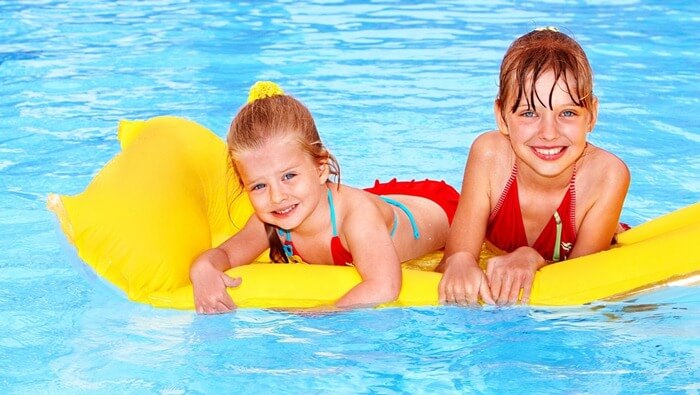 Swimming with your baby on an air mattress can be fun in a pool or river, but it's not a good idea for a seaside vacation. A current or strong wind can carry the boat far from the coast. An inflatable vest or a circle is also not an absolute protection; a child can slip out of them. However, such boats can be used in shallow water (maximum water should be up to the baby's chest).
Swimming with your baby on an air mattress can be fun in a pool or river, but it's not a good idea for a seaside vacation. A current or strong wind can carry the boat far from the coast. An inflatable vest or a circle is also not an absolute protection; a child can slip out of them. However, such boats can be used in shallow water (maximum water should be up to the baby's chest).
5. Do not sunbathe during dangerous hours
 Keep your child out of the sun and do not sunbathe yourself between 11 am and 3 pm. During this time period, solar activity is at its peak and it costs nothing to get burned or get heatstroke. And do not forget to apply sunscreen with an SPF of 30 or higher to your child's skin before going to the beach, as well as grab a patch, mosquito repellent and panthenol, a burn remedy. If a child is on the beach for the first time, it is advisable for him to be in the sun no more than 5 minutes, and then 20 minutes should be spent in the shade. In the following times, the time spent in the sun can be increased by 5 minutes.
Keep your child out of the sun and do not sunbathe yourself between 11 am and 3 pm. During this time period, solar activity is at its peak and it costs nothing to get burned or get heatstroke. And do not forget to apply sunscreen with an SPF of 30 or higher to your child's skin before going to the beach, as well as grab a patch, mosquito repellent and panthenol, a burn remedy. If a child is on the beach for the first time, it is advisable for him to be in the sun no more than 5 minutes, and then 20 minutes should be spent in the shade. In the following times, the time spent in the sun can be increased by 5 minutes.
Symptoms of heatstroke include: confusion and dizziness, extreme fatigue, headache, muscle cramps or weakness, nausea, excessive sweating or no sweating at all, pallor of the skin, swelling (especially of the hands or face), and rapid heartbeat. If these symptoms appear, place the child in the shade, give him plenty of water to drink, and rinse with cool water.
4. Read the warning labels
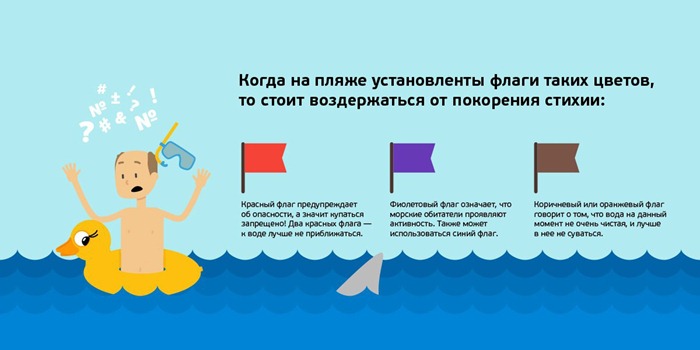
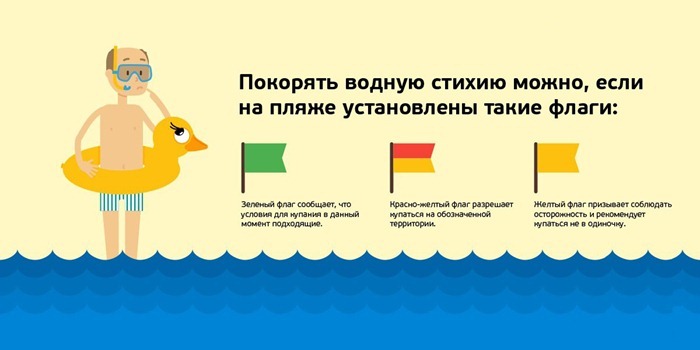 There are colored flags on various beaches, so be sure to ask the lifeguard to explain what the flag means if you are not sure you have understood its meaning correctly.
There are colored flags on various beaches, so be sure to ask the lifeguard to explain what the flag means if you are not sure you have understood its meaning correctly.
- Typically, red flags on a warning indicate heavy surf and currents (ie, “Caution!”). Sometimes a red flag means the beach is closed.
- Yellow flags indicate moderate surf and currents. Be careful and stay within the line of sight of rescuers.
- Green flags indicate that the sea is calm.
- Blue or purple flags often indicate that there are potentially dangerous marine life (such as sharks or jellyfish) nearby.
3. Know when your child needs help
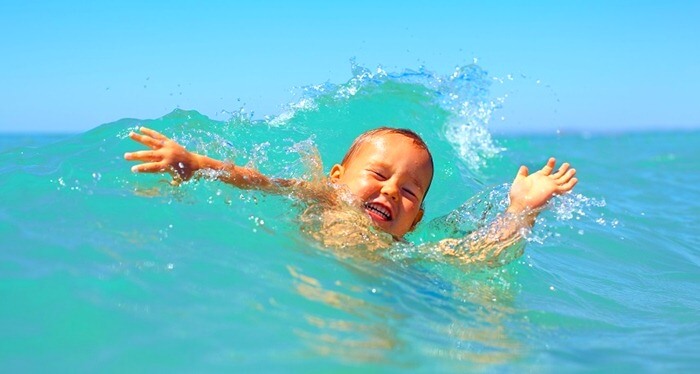 According to statistics, drowning is in the top 3 of the list of leading causes of unintentional deaths of children under 15 years old worldwide. The child can drown even in shallow water, a few meters from the parents. Drowning is usually fairly quiet and fast. A drowning person's head is low in the water (mouth under water) or tilted back with an open mouth, eyes closed or “glassy”, unable to focus, legs are vertically in the water and the drowning person does not move them. A drowning person instinctively stretches his arms out to the sides to push off the water; he cannot raise them and swing them over his head, attracting attention. If you notice one or more signs that the child is drowning, help him immediately.
According to statistics, drowning is in the top 3 of the list of leading causes of unintentional deaths of children under 15 years old worldwide. The child can drown even in shallow water, a few meters from the parents. Drowning is usually fairly quiet and fast. A drowning person's head is low in the water (mouth under water) or tilted back with an open mouth, eyes closed or “glassy”, unable to focus, legs are vertically in the water and the drowning person does not move them. A drowning person instinctively stretches his arms out to the sides to push off the water; he cannot raise them and swing them over his head, attracting attention. If you notice one or more signs that the child is drowning, help him immediately.
2. Pay attention to the waves
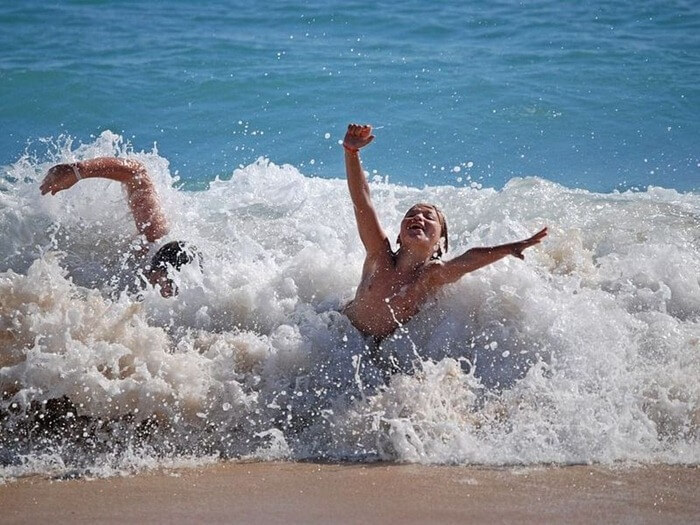 Injuries to children from high waves can range from simple dislocations and broken collarbones to injuries to the internal organs and spine (which can lead to paralysis). Waves that break directly on the shore (rather than a few meters away) can cause serious neck and spine injuries. Therefore, when in the water or near the water line (where water hits the shore), never place your child or stand with your back to the waves.
Injuries to children from high waves can range from simple dislocations and broken collarbones to injuries to the internal organs and spine (which can lead to paralysis). Waves that break directly on the shore (rather than a few meters away) can cause serious neck and spine injuries. Therefore, when in the water or near the water line (where water hits the shore), never place your child or stand with your back to the waves.
1. Do not allow your child to take off their shoes and underwear on the beach
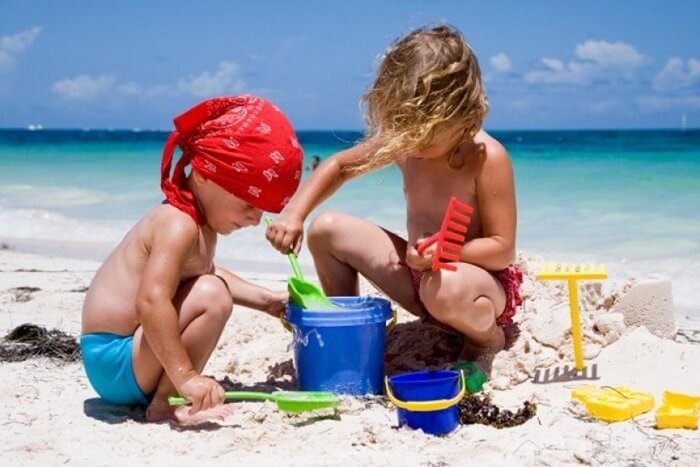 First in our selection of safe travel tips is obvious advice that many parents neglect nonetheless. After all, the feeling of sand between your toes is part of the quintessential beach experience. But when this sand heats up to 40 degrees and above, walking on it is not very pleasant and even dangerous (you can get burned). Black sand beaches are especially dangerous in this regard.
First in our selection of safe travel tips is obvious advice that many parents neglect nonetheless. After all, the feeling of sand between your toes is part of the quintessential beach experience. But when this sand heats up to 40 degrees and above, walking on it is not very pleasant and even dangerous (you can get burned). Black sand beaches are especially dangerous in this regard.
Also, don't bring a small child to the beach without panties. Grains of sand trapped in the genitals can cause irritation and inflammation.

